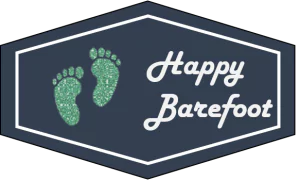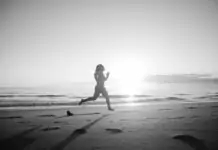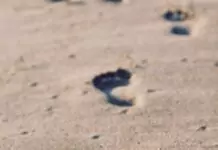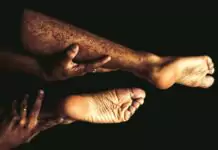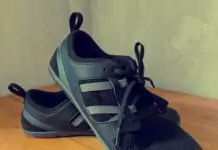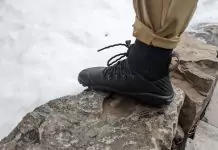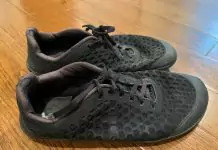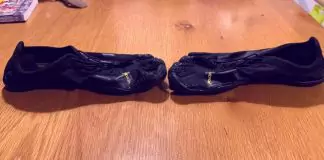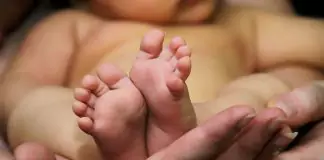There’s an ever-growing community of runners who prefer barefoot running. One thing all of them have in common is the belief that running without supportive footwear can strengthen the muscles of the feet which can, over time, prevent common foot issues and running injuries.

A good number of studies lean towards confirming this claim. Despite this, critics and podiatrists alike still question the barefoot running movement. It hasn’t, however, stopped icons like Hollywood actor Jake Gyllenhaal, as well as several other runners from training and running without any shoes on. More and more people are jumping on the movement which begs the question: Why is barefoot running so popular?
Lower Leg Pain and Injuries
There are ten injuries that are most common to runners. Whether a person is a recreational runner, hobbyist, or professional, he or she is most likely to experience one of the following:
- Plantar fasciitis
- Runners’ knee
- Iliotibial band (ITB) syndrome
- Achilles tendonitis
- Shin splints
- Stress fractures
- Muscle Pull
- Ankle Sprain
- Blisters
- Temperature-Related Injuries
Interestingly, if you research each of the injuries, the major causes are chronic stress and trauma on the parts of the lower body involved in running. The high-impact activity does cause stress on weight-bearing joints.
Although shoe companies have put in their best effort to prevent most of the injuries on the list, they have yet to create a running shoe that can fully protect runners. Newer shoe iterations are born, equipped with the newest technology to enhance performance and, for the most part, prevent injury.
Sadly, studies have been released sighting shoes that have been over-designed, such as maximalist or highly-cushioned shoes, can increase the risk of injury in runners instead of preventing them.
Definitely, more studies need to be done for the claim to be proven, but for most runners who have experienced one of the injuries on the list, they turn to barefoot or minimalist running.
When did barefoot running become popular?

Historically, the spotlight on barefoot running was first shed in the 1960s when the Olympian runner Abebe Bikila won the Olympic marathon from Rome barefoot. About 20 years later, another African runner by the name of Zola Budd Pieterse became known for training and racing barefoot during the IAAF World Cross Country Championships.
There are several others that came after the two pioneers, but ultimately they both paved the way for barefoot running to catch the attention of many.
We did our own research into the trend to attempt to identify how the trend started in the internet age. Using a tool called Google Trends, we observed a spike in April 2008 for the search term Vivobarefoot. One of the leading barefoot shoe brands of today, it was most likely because Vivobarefoot was already gaining traction since releasing their first patent in 2004.
A year after, “Born to run” written by American author and journalist Christopher McDougall was published. After years of research, different experiences, and training, the book describes how to be a better runner, and how long-distance running can be beneficial. It’s not purely about barefoot running, but it does mention the technique in some chapters:
“Shoes block pain, not impact! Pain teaches us to run comfortably! From the moment you start going barefoot, you will change the way you run.”
― Christopher McDougall, Born to Run: A Hidden Tribe, Superathletes, and the Greatest Race the World Has Never Seen
It seems that the traction the book was gaining was the catalyst that brands were waiting for as each one jumped on the bandwagon of producing minimalist or barefoot running shoes.
It has been years since the book was published and the hype for barefoot running has plateaued. Despite this, those who have already experienced the benefits of barefoot running have stuck to the technique. Aside from going on a barefoot run, some have even gone to the extent of switching to barefoot footwear.
Is Barefoot Running Really Better for You?
When it comes to answering the question of barefoot running being better, it would all boil down to how safe you transition from running with supportive footwear to running unshod. There are a good number of studies that show barefoot runners having fewer injuries compared to shod runners. However, it has to be practiced correctly for a runner to lower the risk of injury and strengthen the lower extremities.
Based on a study, running barefoot can change a runner’s foot strike pattern. According to Professor Víctor Manuel Soto Hermoso from the Department of Physical and Sports Education at the University of Granada, “Training based on barefoot running, practiced correctly, produces significant changes in foot support, regardless of the athlete’s speed: forefoot support (metatarsal), tends to minimize impact peaks and, therefore, leads to a lower risk of injury.”
Studies to review:
Is Barefoot Running Still a Thing?
So, is running barefoot still a thing? The popularity may have plateaued but there are still a good number of runners who are into the practice. Of course, there isn’t an exact number recorded of the number of people who still run and train barefoot, but brands like Xero Shoes or Vivobarefoot continue to make shoes to further the practice of barefoot running and even living. You just have to make sure that when you have decided to jump on the trend, you do it the correct way by starting slowly. It’s best to know how to avoid injuries while transitioning to minimal shoes.
